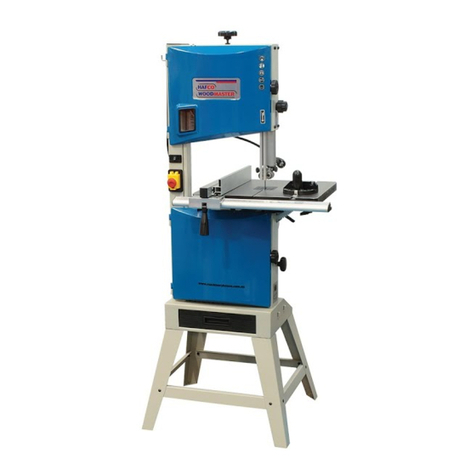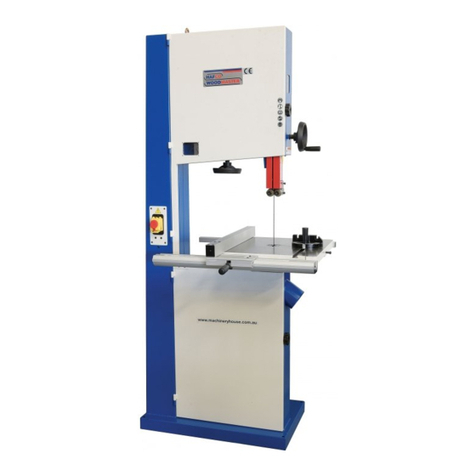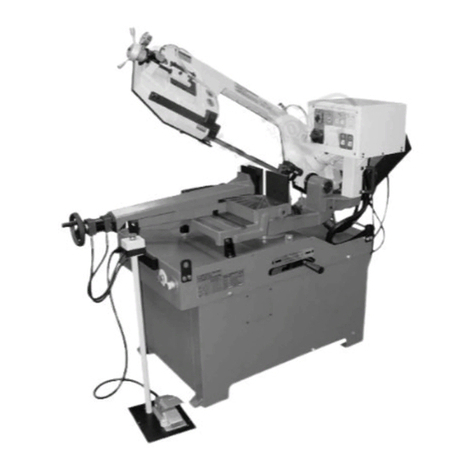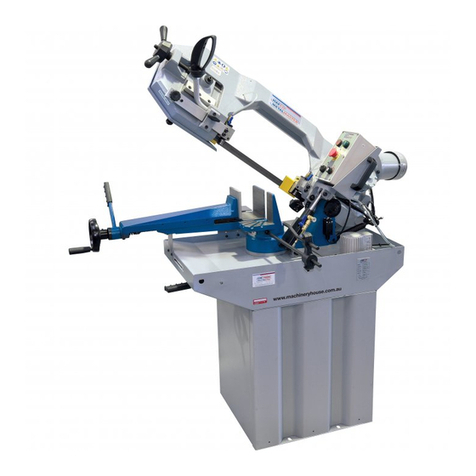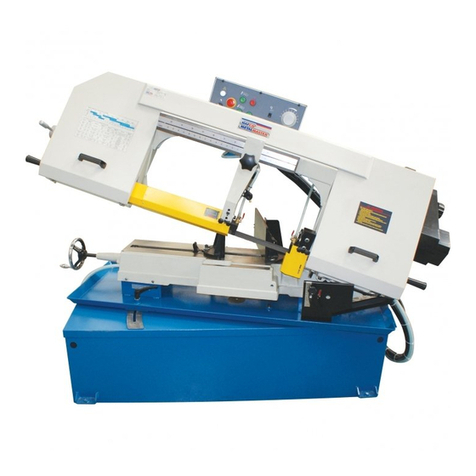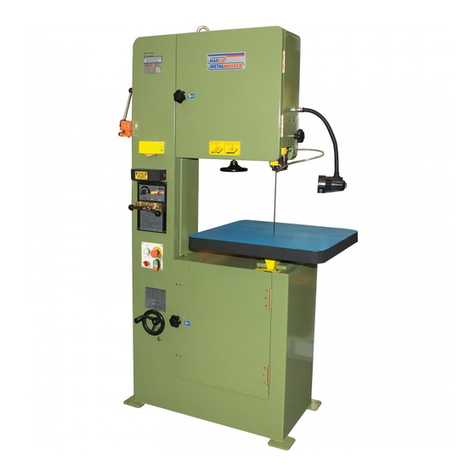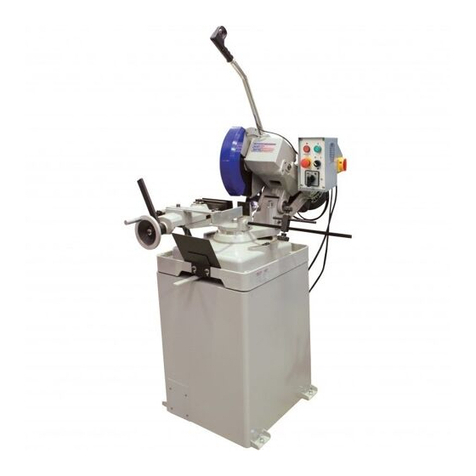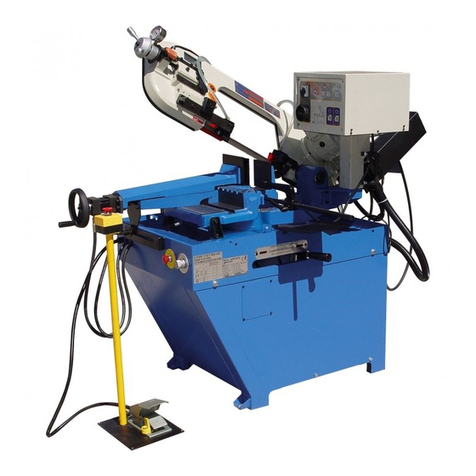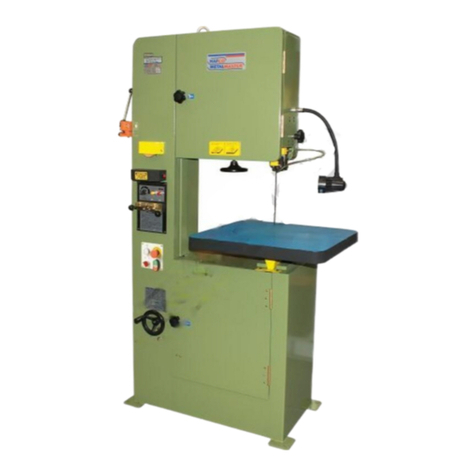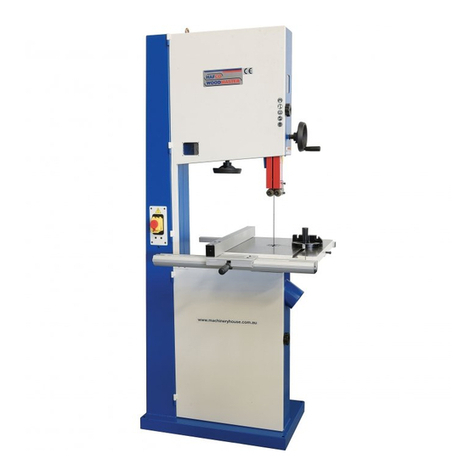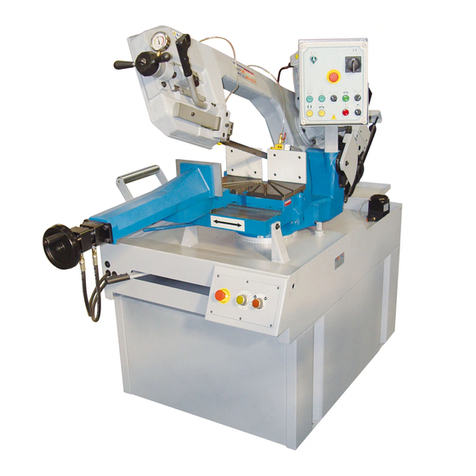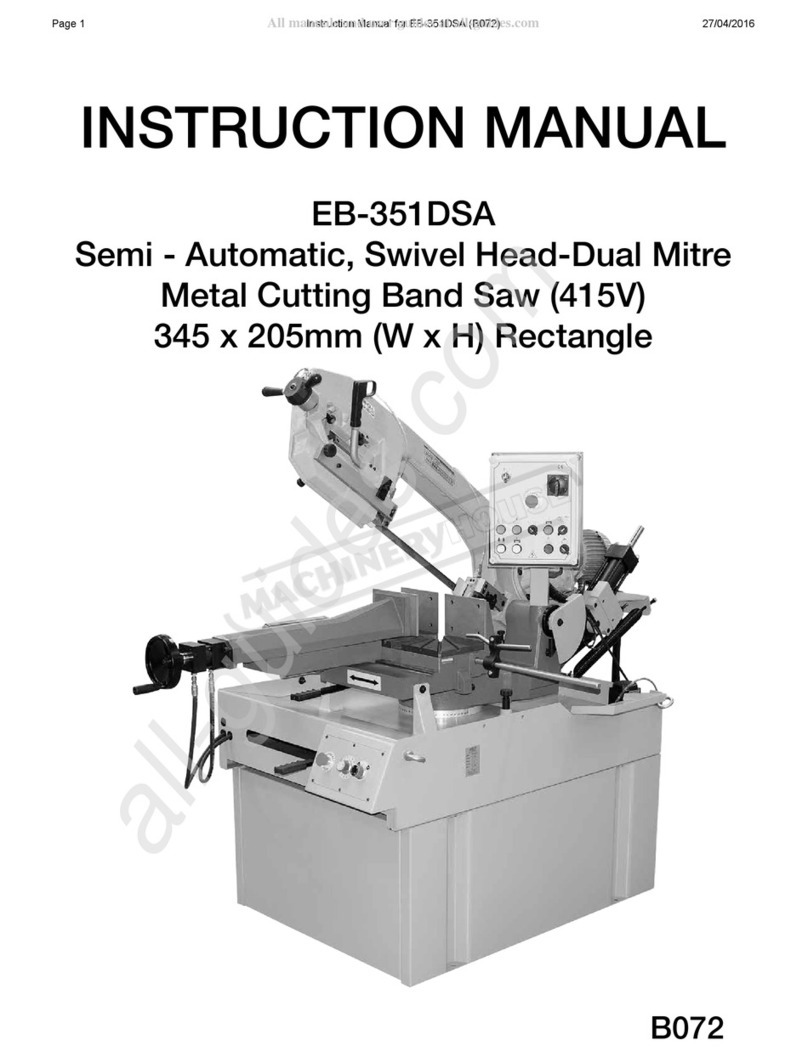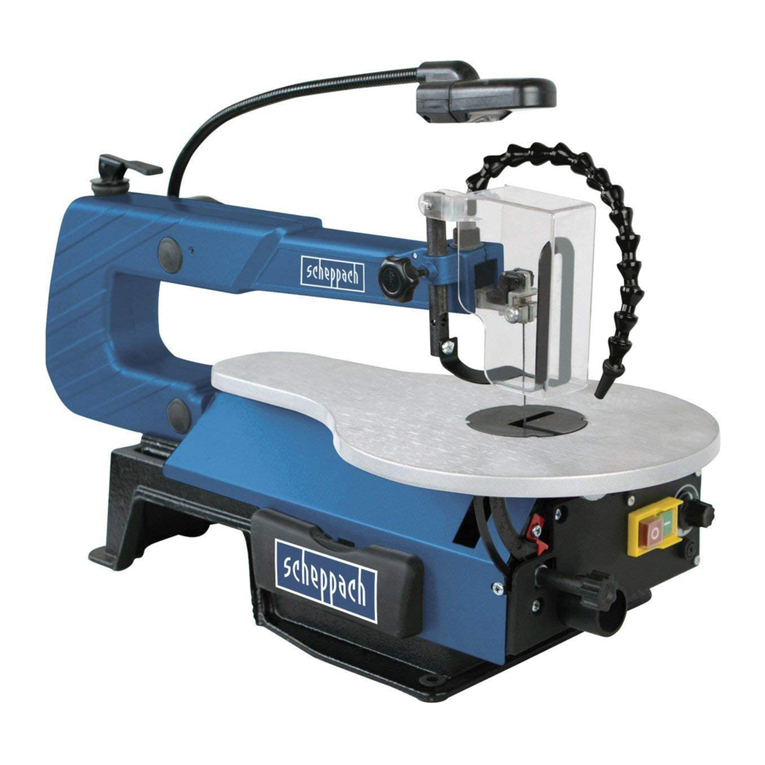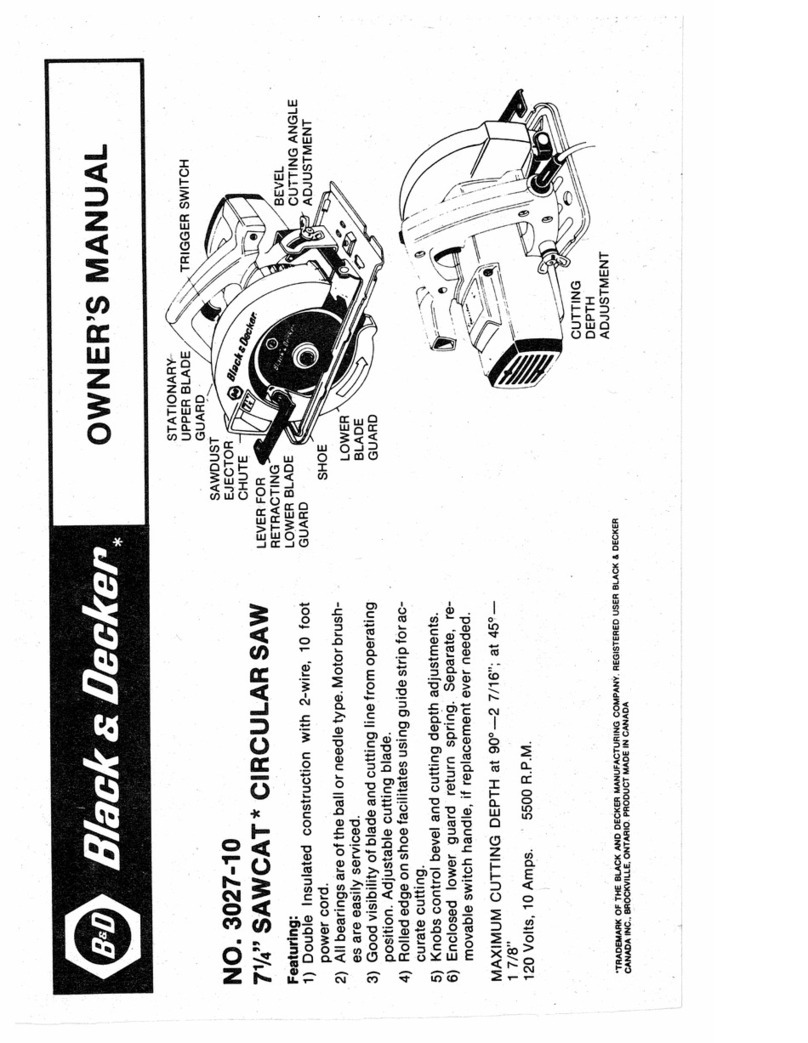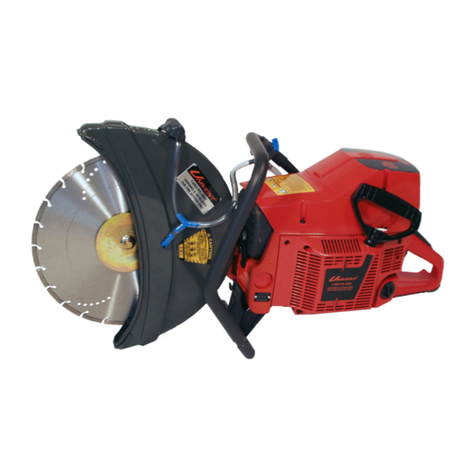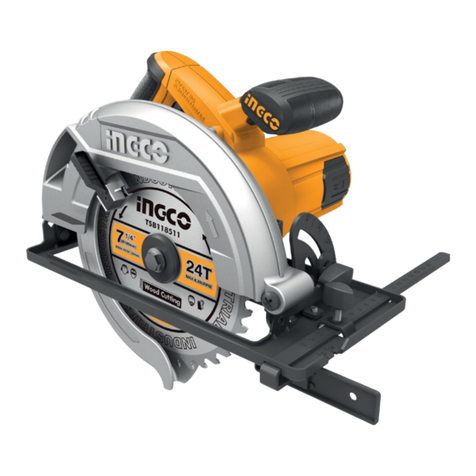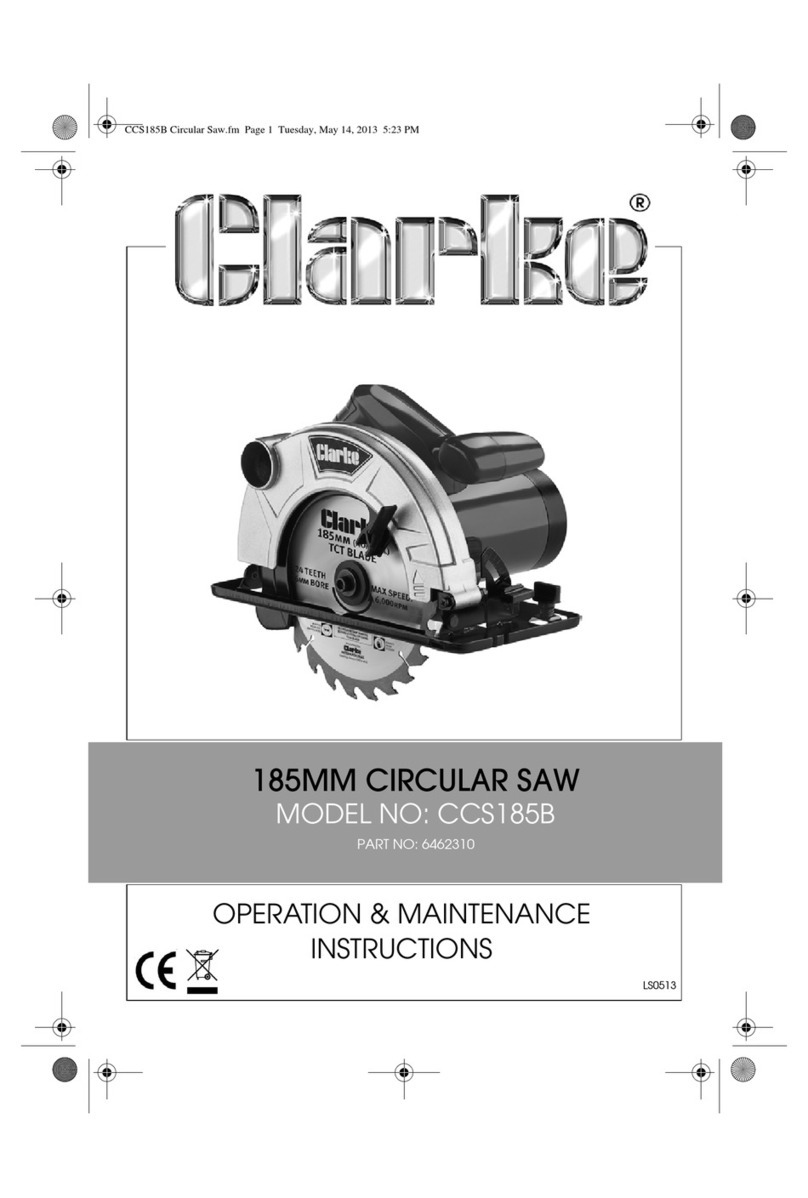(8). DIRECTIONOF FEED. Feed work into a blade or cutter against the direction of rotation of the blade or
cutter only.
(9). ADJUST AND POSITION the blade guide arm before starting the cut.
(10). KEEP BLADE GUIDE ARM TIGHT, A loose blade guide arm will affect sawing accuracy.
(11). MAKE SURE blade speed is set correctly for material being cut.
(12). CHECK for proper blade size and type.
(13). STOP the machine before putting material in the vise.
(14). ALWAYS have stock firmly clamped in vise before starting cut.
(15). GROUNDALL TOOLS. If tool is equipped with three-prong plug, it should be plugged into a
three-hole electrical receptacle. If an adapter is used to accommodate atwoprong receptacle, the adapter lug
must be attached to a known ground. Never removed the third prong.
C. ADJUSTMENT :
MAKE all adjustments with the power off. In order to obtain the machine. precision and correct ways of
adjustment while assembling, the user should read the detailed instruction in this manual.
D. WORKING ENVIRONMENT:
(1). KEEP WORK AREA CLEAN. Cluttered areas and benches invite accidents.
(2). DON'T USE IN DANGEROUS ENVIRONMENT. Don't use power tools in damp or wet locations, or
expose them to rain. Keep work area well-lighted.
(3). KEEP CHILEREN AND VISITIORS AWAY. All children and visitors should be kept a safe distance
from work area.
(4). DON’T install & use this machine in explosive, dangerous environment.
E. MAINTENANCE:
(1). DISCONNECT machine from power source when making repairs.
(2). CHECK DAMAGED PARTS. Before further using of the tool, a guard or other part that is damaged
should be carefully checked to ensure that it will operate properly and perform its intended function. Check
for alignment of moving parts, binding of moving parts, breakage of parts, mounting, and any other
conditions that may affect its operation. A guard or other part that is damaged should be properly repaired or
replaced.
(3). DISCONNECT TOOLS before servicing and when changing accessories such as blades, bits, cutters,
etc.
(4). MAKE SURE that blade tension and blade tacking are properly adjusted.
(5). RE-CHECK blade tension after initial cut with a new blade.
(6). TO RPOLONG BLADE LIFE ALWAYS release blade tension at the end of each workday.
(7). CHECK COOLANT DAILY Low coolant level can cause foaming and high blade temperatures. Dirty
coolant can clog pump, cause crooked. Rust, low cutting rate and permanent blade failure. Dirty coolant can
cause the growth of bacteria with ensuing skin irritation.
(8). WHEN CUTTING MAGNESIUM NEVER use soluble oils or emulsions(oil-water mix) as water will
greatly intensify any accidental magnesium chip fire. See your industrial coolant supplier for specific coolant
recommendations when cutting magnesium.
(9). TO PRNMT corrosion of machined surfaces when a soluble on is used as coolant, pay particular
attention to wiping dry the surfaces where fluid accumulates and does not evaporate quickly, such as between
the machine bed and vise.
F. SPECTIFIED USAGE:
This machine is used only for general metals cutting within the range of cutting capacity.
4

